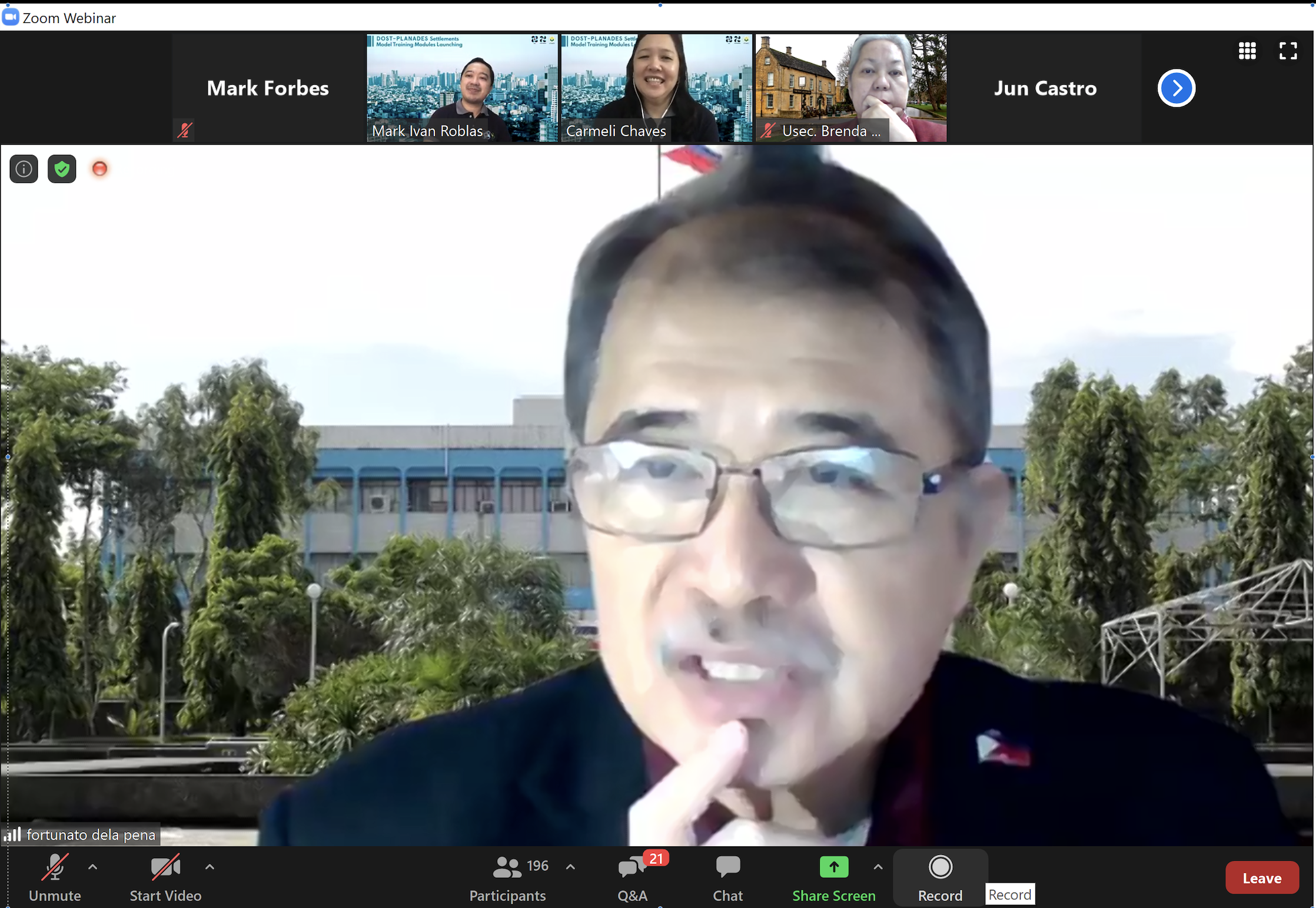
Screenshot from the Training Launch on 10 August 2020. The activity was graced by DOST Secretary Fortunato de la Peña, DOST Undersecretary Brenda Nazareth-Manzano, UP Diliman Chancellor Fidel Nemenzo, and UP-SURP Dean Hussein Lidasan
10 August 2020 – The Department of Science and Technology and the University of the Philippines today launched an online training course for local government planners to help them project growth in their area.
Dubbed the DOST-PLANADES Settlement Model Training Module, the online course will be a useful tool in identifying suitable locations for urban expansion, predicting future demand for housing and its financial requirements, and planning for the spatial development of these emerging areas.
The training module is a product of a research conducted by the UP Planning and Development Research Foundation Inc. (PLANADES), supported by DOST and monitored by the DOST Philippine Council for Industry, Energy and Emerging Technology Research and Development (DOST-PCIEERD).
DOST-PCIEERD Executive Director Dr. Enrico Paringit lauded the timeliness of the training module especially its shift to the online platform.
“As leader and partner in enabling innovations, we believe that the DOST PLANADES Settlement Training Module is an essential tool for local government planners who would like to come up with data-driven, science-based plan for their development. This training module will be helpful in their journey towards sustainable growth in the regions,” he said.
The training module offers an online course consisting of eight modules and is expected to be completed within 22 hours. The project will maximize the use of Canvas Network to aid the trainers and learners in completing the entire course.
The Human Settlement Modeling Project under PLANADES was created to deal with two concerns: first, to project settlements development in new growth areas in the country, and second, to estimate the corresponding housing requirements in the identified growth areas. Its four outputs are as follows:
- A settlement development model for new growth areas in the Philippines
- An estimation of projected housing requirements in the new growth areas.
- The adoption of a model by a pilot LGU in its Comprehensive Land Use and Comprehensive Development Plan
- A training module on the use of the settlements development model
PLANADES has identified nine (9) drivers of growth that would affect the development. According to the study, they are:
- Internal Revenue Allotment
- Average Family Income
- Government Expenditure
- Resilience to Flood Hazards
- Presence of Ecozones
- Proximity to Airport/Seaport
- Groundwater Allocation
- Proximity to Road Network
- Within developable areas (outside Protected areas)
The research team has also identified the top 20 growth provinces. They are:
- Cebu
- Cavite
- Bulacan
- Negros Occidental
- Laguna
- Pangasinan
- Rizal
- Davao del Sur
- Batangas
- Pampanga
- Iloilo
- Nueva Ecija
- Quezon
- Leyte
- Zamboanga del Sur
- Camarines Sur
- Isabela
- South Cotabato
- Misamis Oriental and
- Negros Oriental
Paringit expressed optimism that the outputs of the DOST PLANADES Settlement Model will boost economic activity in the region as it can pave the way for better local government planning.
“DOST PCIEERD will continue to support endeavors like the DOST PLANADES Settlement Model Project and provide solutions and opportunities that can make change happen and accelerate development in our regions,” he said.
Interested individuals may inquire about the training program by sending an email to This email address is being protected from spambots. You need JavaScript enabled to view it..




